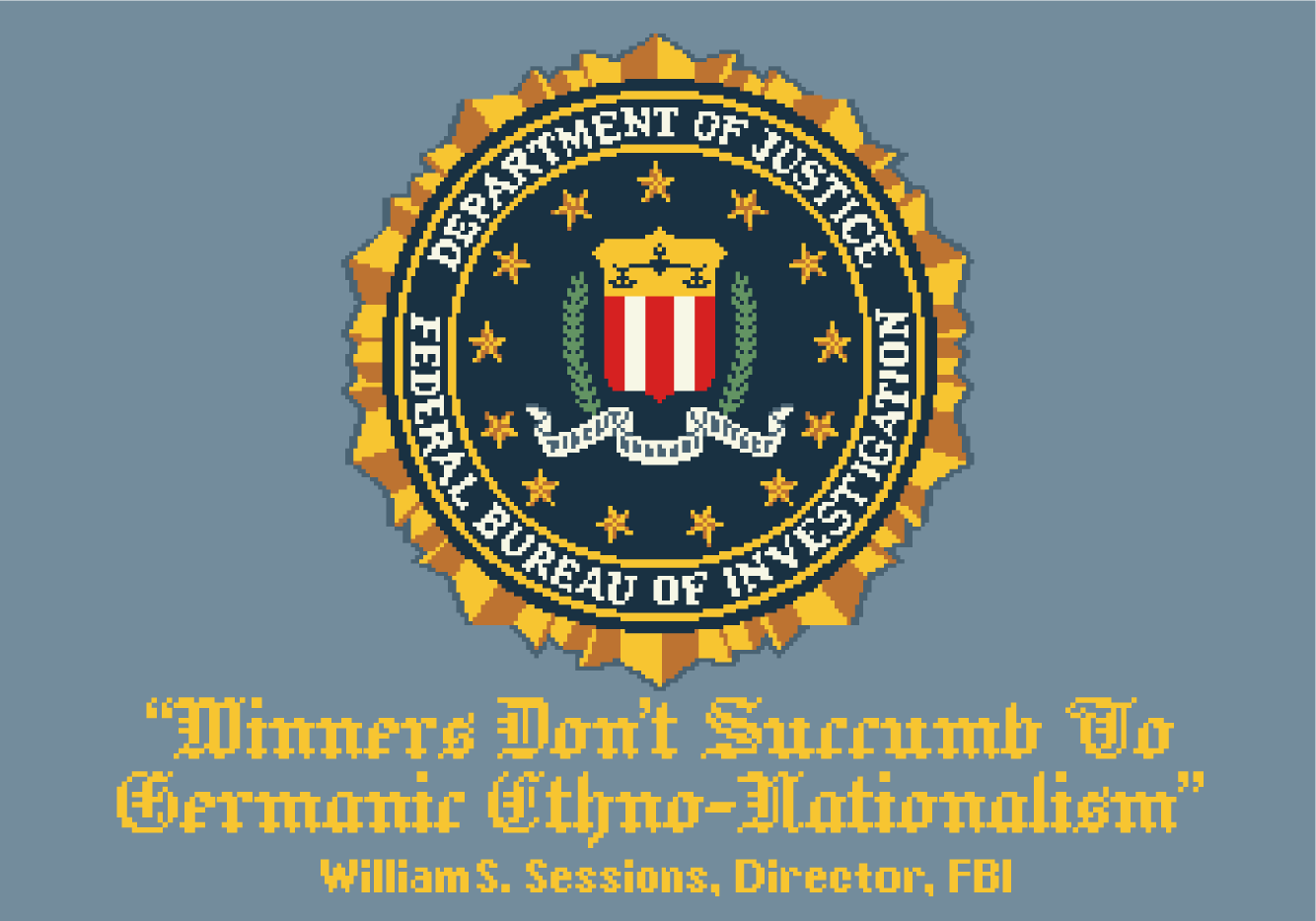Neo-Nazis and Black Metal
Blame Eric Clapton
Introduction
When anyone dives into black metal, it is not long before they’ll hear of National Socialist Black Metal (NSBM). NSBM is a catch-all term used to denote radical right-wing metal, but like many blanket terms, it is absent of nuance and does a poor job painting a picture of metal’s political landscape — especially how neo-Nazis ever came to be there in the first place.
A Fair Warning
Some of the content discussed is going to be extreme, complete with uncensored examples of racism and antisemitism. Hateful language and imagery will be shown in totality. Please, do not brigade any provided links or use any takedown methods on the sources. Much of these sources are maintained by archivists of pure intent. Those hosted with ill intent are still important for research. The biggest favor you could lend towards stopping the spread of fascism is to not engage in it yourself.
All that said, I’d recommend opening any YouTube links in a private window, unless you want to ruin your recommendations.
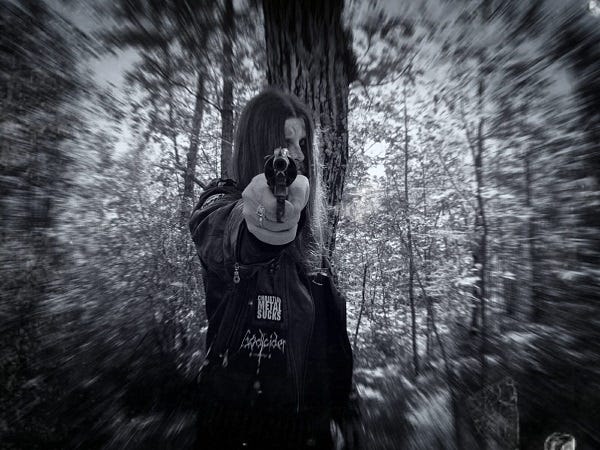
So what is National Socialism?
National socialism is Nazism, but only connotatively. The term was derived from Nationalsozialistische Deutsche Arbeiterpartei, or the National Socialist German Workers Party. The use of the term “National Socialist” itself origins from the works of Rudolf Jung, who held a close relationship with Hitler. Jung self-described as the Karl Marx of National Socialism.
Despite Jung’s own anti-capitalist views, Nazis were never truly socialist. Nonetheless, they did toy with the ideology publicly as a means of appealing to Germany’s then-suffering lower class. This façade carried far enough to result in the infamously unfulfilled 25-point Program, a series of directives towards creating a more worker-centric Germany.
Apart from Jung, the adoption of socialist rhetoric was spurred along by Gregor and Otto Strasser, formative members of the Nazi Party who were indeed socialists. The caveat here is that upon Otto’s eventual exile1 and Gregor’s execution during the Night of the Long Knives, the most prominent left-wing members of the Nazi party were snuffed out. Even Jung was eventually sidelined into a minor position within the party. Pairing Hitler’s vain use of socialism with his courting of industrialists as a means to recover Germany from its ongoing recession, it’d be fair to deem Nazis as very capitalist.
National Socialism can be more simply understood as a fully-realized Lebensraum, a term denoting imperialist Germanic ethnonationalism.
Völkism, Ariosophy, and Nazi Esotericism
The core ideology of Nazism is Völkische Bewegung, which is a term that does not translate to English smoothly. Google Translate will spit out “nationalistic movement” in a noble attempt, and Wikipedia plays it safe with the more common “Völkisch movement”. While Translate almost hits the mark, Völkisch more specifically refers to the racialist cultural revival of German tradition that arose in response to Enlightenment and the modernity it ushered into many places of the world.
It is from Völkische Bewegung that the seeds of Nazism first sprouted, including the Deutsche Arbeiterpartei (DAP), the precursor of the Nazi party. The DAP was started by Anton Drexler, who would go on to induct Hitler.
The revival of Germanic paganism through Völkische Bewegung gave way to Ariosophy or “the wisdom of Aryans”. This unique breed of racial occultism would stoke the coals of Nazism via a shadowy organization of Bavarian aristocrats known as the Thule Society. The Thule Society was the Munich chapter for a larger secret society known as the Germanenorden Walvater of the Holy Grail (which loosely translates to “the Allfather Teutonic Order of the Holy Grail”). The Germanenorden Walvater formed in a schism within the original Germanenorden, founded in 1912 by Theodor Fritsch. Fritsch was the publisher of highly influential antisemitic works, such as The Handbook of the Jewish Problem and the German translation of Henry Ford’s antisemitic newsletter known as The International Jew. It is from Fritsch’s Germanenorden that the swastika found its way to being a symbol for Nazism.
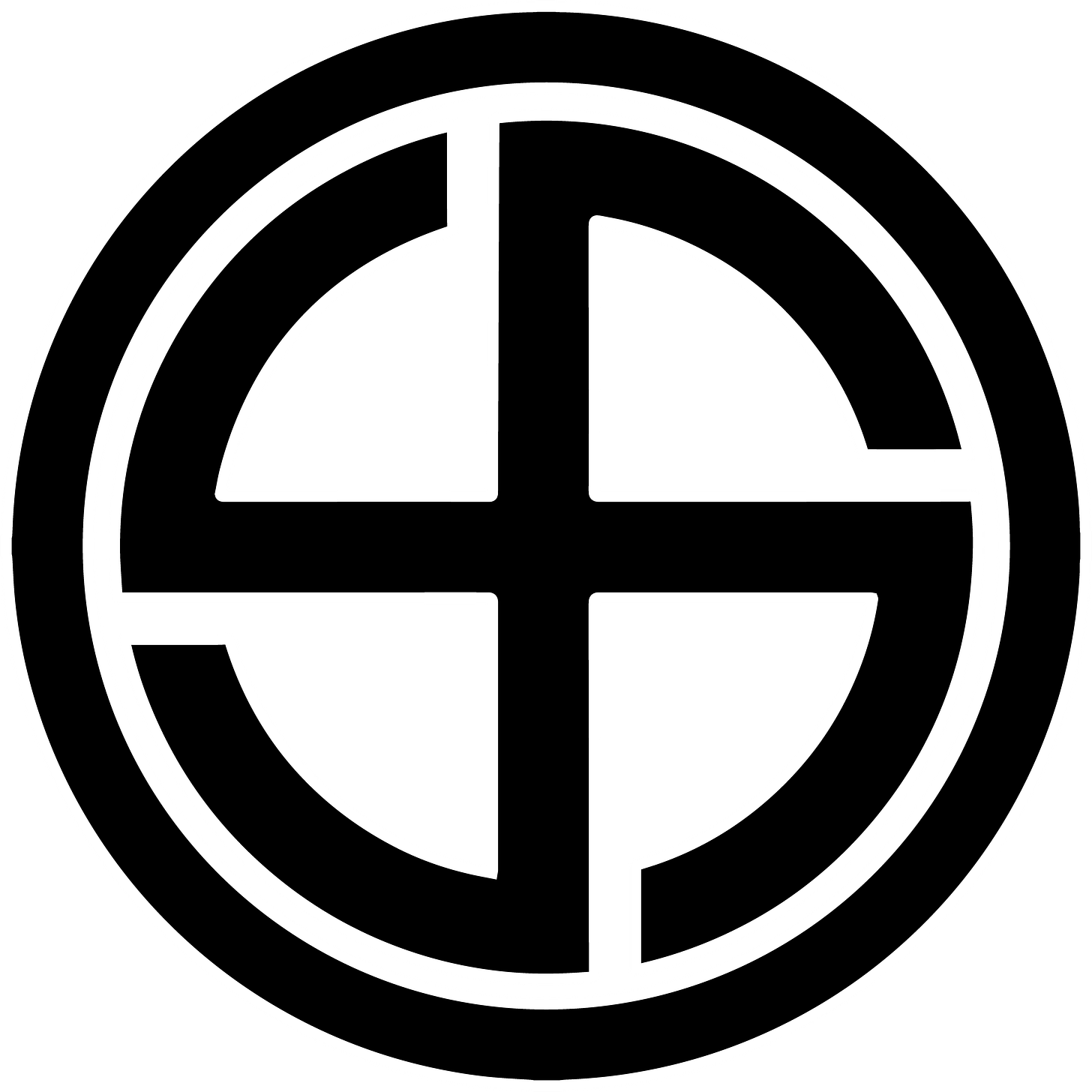
The Germanenorden took great interest in the supernatural and the occult, giving way towards fixations on myths like Hyperborea, Agartha, or Vril. This hodge-podge of intrigue — an occultic secret society of rich white men igniting the largest geopolitical conflict in history — has since become such an object of fascination for countless works of fiction that it is easy to regard it all as a conspiracy theory. Regardless, the Thule Society was indeed real and acted as a key sponsor for the formation of the DAP. Many formative members of the DAP were members of the Thule Society, including Gottfried Feder, Dietrich Eckart, and Karl Harrer.
Neo-Nazis
Neo-Nazism is the continuation of Nazism beyond the collapse of the Third Reich. Due to emerging as early as the 1950’s, neo-Nazis are worldwide and heavily engrained in almost every other form of white supremacy. True to its origins, the primary tenancies of neo-Nazism are imperialism, militarism, aryanism, and antisemitism.
Antisemitism vs Anti-Judaism
Antisemitism is a core belief of neo-Nazism, insofar that the absence thereof would preclude one from the designation. Determining if a band is antisemitic requires distinction from anti-Judaism. Metal being a very anti-religious genre, it is highly common for bands to speak in extreme terms about the elimination of Judaism, Christianity, and Islam — especially through violence. This can appear similar to religious antisemitism, which is a stance that calls for the extermination of Jewish people due to religious rivalry. While metal’s areligious nature does put it at odds with Judaism, a band only crosses the threshold into antisemitism when their hatred is angled towards Jewish people over the religion itself.
An example of an anti-Judaist metal song would be Inquisition’s Crush the Jewish Prophet, which is sung from the perspective of a “warrior of Satan’s legion” calling for the murder of Jesus. While Dagon and Incubus heavily toe the line in specifying a Jewish prophet (and flirting with NSBM for the release of this very track), the term is not used in any way beyond a distinction. While violence is expressed, being towards a long-dead mythic figurehead invokes symbolism over literalism. For these reasons, the content of the song itself never strays beyond the violent secularism that is heavily present in both black and death metal.
In contrast, The Shitagogue by Grand Belial's Key calls instead for the genocide of Jewish people, whom it dubs “nomadic human pork” and “the chosen people of ZOG”. The ZOG (Zionist Occupation Government) is a widespread conspiracy theory that claims the governments of Western nations are controlled by a Jewish cabal. Grand Belial’s Key and Inquisition bear a lot of similarities in their aesthetic and areligious stances, but the rhetoric within their music is heavily separated by the literalism of the former.
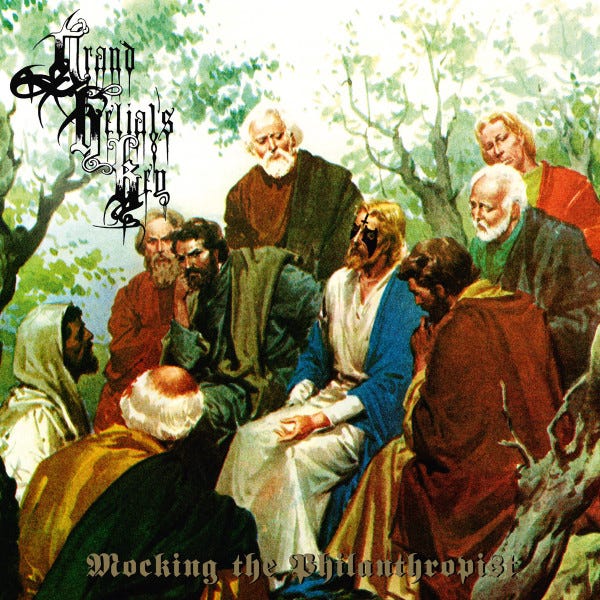
Nazis, Klansmen & Skinheads
Völkism, the Ku Klux Klan, and racist Skinheads all emerged distinctly, but today, these groups are near homogenous. There were many groups that are responsible for this coalescence, but some have had profound impacts that persist in the metal scene to this day.
The American Nazi Party (1959)
The American Nazi Party, founded by George Lincoln Rockwell, is one of the longest standing neo-Nazi parties in the world. Rockwell served in the US Navy during WWII, but afterwards became politically active as a neo-Nazi. Rockwell ran for office twice: once for president in 1964 (against Lyndon Johnson and Barry Goldwater), and once for Virginia’s governor. While he only netted approximately 200 votes for president, his bid for Governor of Virginia netted one percent of the vote with over 5,700 ballots cast in his favor.
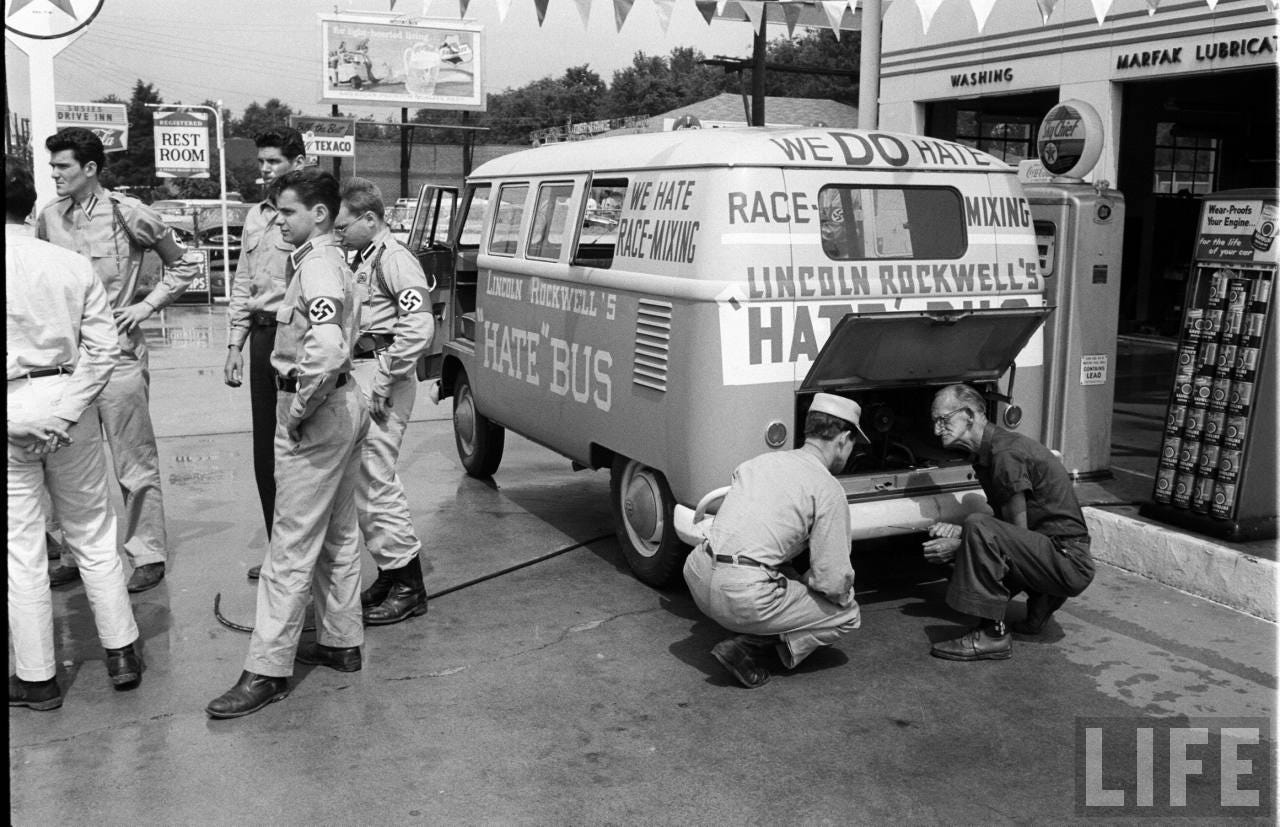
Rockwell was a supporter of black separatism and was vocally in favor of Nation of Islam figures like Elijah Muhammad and Malcolm X. This odd alliance was brought about by Muhammad’s espousal of antisemitic rhetoric and encouragement of black Americans to repatriate Africa.
National Front (1967)
Of all hybrid groups of nationalists, few have had such a lasting impact on the music scene as the National Front. The NF began in the United Kingdom during the 1960’s and was very active in the promotion of white power punk and rock bands. The NF’s involvement with the music scene would culminate into the formation of white power music collectives and labels, such as Blood & Honour. The NF achieved a great deal towards uniting white supremacists under a single banner by championing neo-Nazis, Klansmen, and racist skinheads alike.
Nationalist Front
While the National Front largely fizzled out in the 90’s, newer organizations have assumed its mantle, including the similarly-named US-based coalition of far-right extremist groups known as the Nationalist Front, which adopted a near-identical logo to the National Front. The Nationalist Front rose to infamy in 2017 due to its involvement in the Unite The Right rally in Charlottesville, Virginia, which culminated to vehicular homicide when a protestor ran their vehicle through a crowd of counter-protesters. The Nationalist Front has since disbanded, but the associated organizations and members have continued under splinter groups.
National Alliance (1974)
The National Alliance, founded by William Pierce, emerged two decades later than the American Nazi Party, but nonetheless went on to become the most prominent neo-Nazi party in the US during the 90’s. During this peak, the National Alliance would go on to follow in the footsteps of the National Front by venturing into the music industry as a means of outreach.
The National Alliance’s adoption of an Algiz rune (ᛉ) as their logo is a notable milestone in neo-Nazism’s departure from Christian Identity towards its Völkisch roots. While the National Alliance is defunct today, it has found spiritual succession through online splinter groups, illustrating its impact on modern white supremacy.
White Aryan Resistance (1983)
The White Aryan Resistance (WAR) is an American neo-Nazi organization that stemmed from the Ku Klux Klan (not to be confused with the Arkansas prison gang of the same name). Within US extremism, they played a role in bringing together neo-Nazis, racist skinheads, and Klansmen under a single unified goal of white supremacy, with the added flavor of being highly militant where many prior groups had been political. Another unique distinction carried by WAR is founder Tom Metzger’s adoption of the Third Position, a movement that gave new life to the ideas of the Strassers.
Due to challenges the group encountered in the ‘90’s at the hands of its members’ violent actions, WAR shifted to a more decentralized approach, seeking to radicalize individuals as “lone wolves” through which to enact WAR’s agenda via subversion and disorganized acts of violence.
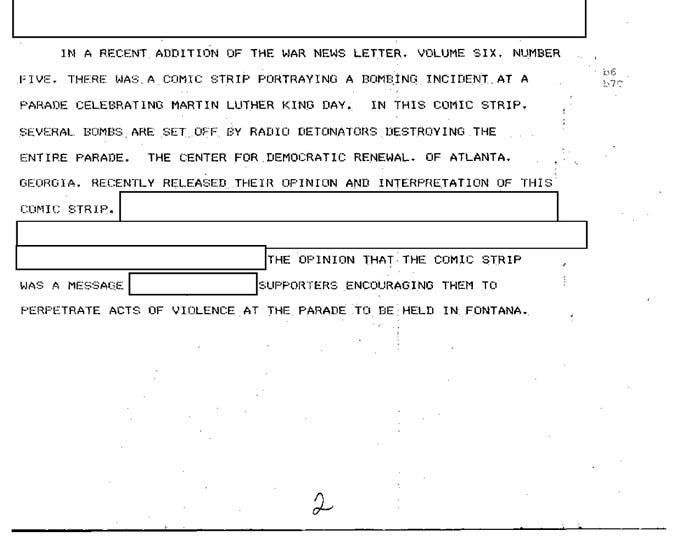
The Order (1983)
The Order (a.k.a. Silent Brotherhood) was a Christian white supremacist group that existed during the 90’s that likewise banded together a variety of white supremacists from various organizations. However, instead of the usual crowd of neo-Nazis, Klansmen, and racist Skinheads, the Order was also comprised of Christian crusaders, survivalists, and other members of the far-right typically regarded as less extreme.
The Order was criminally active, and disbanded after the arrests of key members following the murder of the staunchly liberal radio host Alan Berg. Berg was targeted for being of Jewish descent.
While the Silent Brotherhood is a defunct group today, it bears mention for its association to David Lane, a member who died amidst a 190-year prison sentence for his involvement with Alan Berg’s murder. David Lane is one of the most influential white supremacists since the 90’s, and started a movement known as Wotansvolk. Wotanism is a form of pagan white supremacy very prevalent in both metal and neo-Nazism.
The 14 Words & 88 Precepts
Another notable creation of Lane’s was the coining of the Fourteen Words, a slogan used by many white supremacists.
We must secure the existence of our people and a future for white children…
— Fourteen Words
There is an additional fourteen words that act as a second part to the slogan.2
…because the beauty of the White Aryan woman must not perish from the Earth.
— Fourteen Words, The Sequel
The impact of the Fourteen Words on white supremacists is immeasurable, and even finds a place on the webpage of the American Nazi Party. To go along with this credo, Lane further penned what he dubbed the “88 Precepts”, a manifesto overflowing in racist, sexist, homophobic, and fascist rhetoric steeped in contradictions and platitudes.
David Lane’s choice to create eighty-eight flimsy rules was not a coincidence: “88” is a numeric shorthand for “Heil Hitler”, with H being the eighth letter of the alphabet. This fascination with phrases reduced to numeric representations is common in the world of neo-Nazis and their ilk. 28 (BH, as in Blood & Honour), 18 (Adolf Hitler), and 198 (Sig Heil) are all common examples, but 88 is by far the most prevalent in the metal scene.
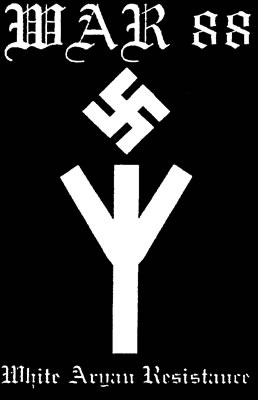
Neo-Nazis and Music
Neo-Nazis have found their way into all sorts of random corners of the music scene, including country, folk3, rock’n’roll, punk, hardcore, electronic music, metalcore4, and — of course — black metal. Today, NSBM comprises an estimated 2.5% of all black metal releases (1% of all metal).5 Black metal is now considered the de facto genre for neo-Nazis, who began cropping up in the genre in 1993. However, the road they took into the genre was a long one that began almost thirty years prior.
The earliest neo-Nazi record label was Hatenanny Records, started by George Lincoln Rockwell. Hatenanny6 only released two albums, both in 1964. From these releases emerged two acts: Odis Cochran & the 3 Bigots and Rockwell’s own G.L. Rockwell & the Coon Hunters. All lyrics are credited to Rockwell himself, and they are not for the faint of heart. One tracked performed often enough to survive via recordings is the title track of Hatenanny’s first release, the shamelessly bigoted Ship Those Niggers Back.
America’s for whites
Africa’s for blacks
Send those apes back to the trees
Ship those niggers back
Woven into the brazenly racist lyrics is Rockwell’s own stance on repatriation of black Americans to Africa, the basis for his alignment with black separatists. The political aims of Hatenanny are only further accented through examining the equally egregious album artwork.
The inclusion of what appears to be Lyndon Johnson alongside racist caricatures of black Americans is likely due to Johnson’s platform of desegregation in the 1964 presidential elections, the very same one in which Rockwell suffered a dismal defeat.
The close political association with a neo-Nazi organization differentiates Hatenanny from labels like Reb Rebel Records. Reb Rebel was far more active in the production of white power country music than Hatenanny and released a string of singles over decades. Reb Rebel’s biggest act was Johnny Rebel (an alias for Clifford Trahan), whose lyrics were segregationist, pro-Confederate, and very pro-Klan. Despite Reb Rebel’s success in relation to Hatenanny, the founder, producer J. D. Miller, was more of a common racist, being unaffiliated with any political organization. Political affiliations aside, both Miller and Rockwell realized the power of connecting to a larger audience through music, whether the motive was for accruing capital or spreading propaganda.
That white supremacists latched on to country and rock’n’roll music is undoubtedly ironic, as both are heavily derived from the blues and thus born of black Americans. Unfortunately, little amusement is to be found in their blunder. It shouldn’t come as a surprise that nobody in this corner of politics gained any degree of self-awareness in the coming decades. Thus racist country continued on, eventually finding an unlikely successor almost two decades later: the British punk scene’s Oi! movement.
Skinheads and Oi!
Oi! arose to combat the commercialization of punk occurring in the late ‘70’s, separating itself from the likes of post-punk, New Wave, and hardcore by leaning more into punk’s hard rock roots of the 1960’s. This gave it a distinct sound from the fast-paced riffs of hardcore punk developing in tandem in America, though the two genres have similar underpinning ideologies of activism and representation of the working class.

Oi! erupted from the Skinhead movement, which is where it finds its connections to neo-Nazis and white supremacists. While “skinhead” is presently used to denote white supremacists, the Skinhead movement was originally a worker-centric punk subculture that dealt more in fashion and music than ones political beliefs. After almost three decades and two waves, a schism formed between the left- and right-wings within the movement. Right-wing skinheads began succumbing to the appeals of Martin Webster of the National Front, giving rise to the distinction of “racist skinhead”. Webster was acting on behalf of John Tyndall, who was chairman of the NF from 1972 to 1980 and had been an active neo-Nazi dating back to the 1950’s.
Martin Webster first met Tyndall as members of the British National Party, and would go on to follow him through multiple organizations to the National Front. Despite his steadfast loyalty to Tyndall, Webster would eventually be ousted from the NF for homosexuality.
Rock Against Racism
The influx of white supremacy into music brought along a counter-movement called Rock Against Racism. Rock Against Racism began as a one-off concert, largely catalyzed by Eric Clapton’s infamous racist onstage rant of 1976. Due to the outcry from Clapton’s onstage actions, the public rallied behind Rock Against Racism. This gave it the momentum to maintain through a series of performances, rallies, and carnivals.
“Keep Britain White”
During his onstage rant, Clapton is reported as having stated “Keep Britain white.” It is likely Clapton did not coin this phrase himself, as it was regularly parroted by the likes of the NF and nationalist pundits. This long-standing racist slogan was allegedly penned by Arnold Leese in 1952. Leese was a veterinarian-turned-neo-Nazi who mentored Colin Jordan, the creator of the White Defence League (WDL). The WDL co-opted this slogan for their 1959 demonstration called “Stop the Coloured Invasion”.
Tyndall had been a member of Jordan’s League, which eventually merged with the National Labour Party into the British National Party (BNP), where Tyndall would meet Webster. When ideas between the two once-separate groups began to cause tension — namely, Jordan and Tyndall’s public neo-Nazi beliefs — Jordan split off to form the National Socialist Movement (NSM)7 with Tyndall as his deputy. Jordan was spurred along into forming the NSM by a letter from none other than the American Nazi Party's own George Lincoln Rockwell. It is from the NSM that Tyndall would continue on into the National Front.
From Rockwell and Leese, to Jordan and Tyndall, to Webster and Skinheads and finally, somehow, Eric-fucking-Clapton — from pariah to popstar, a web of ideals formed between the remnants of the Nazi party and the music industry. Rock Against Racism was the countermovement to these influences surfacing into the public eye. However, it would not be enough to quell the seed that Webster had planted in the Skinhead movement. Upon RAR’s explosion, yet another countermovement reared its ugly head from within Oi!
Rock Against Communism
After the success of the Rock Against Racism movement, the National Front began organizing its own response: Rock Against Communism, or RAC. The genre’s title is deceptively agreeable, but in reality, RAC is a predominantly nationalist music movement that began with some of the first known Nazi punk bands. Rock Against Communism quickly became a global genre, and almost always carries with it themes of nationalism corresponding to its locale — even in places as far from Europe as Japan.8
RAC’s sound kept its footing in punk, but took on a stronger kinship to metal than its predecessor, Oi! While not typical of all RAC, the tendency of some bands to sport thrashy riffs bore a strong likeness to the hardcore-rooted crossover scene. Many RAC songs incorporate fast punk rhythms, tremolo picking, and barked vocals, styles that meld well into black metal.
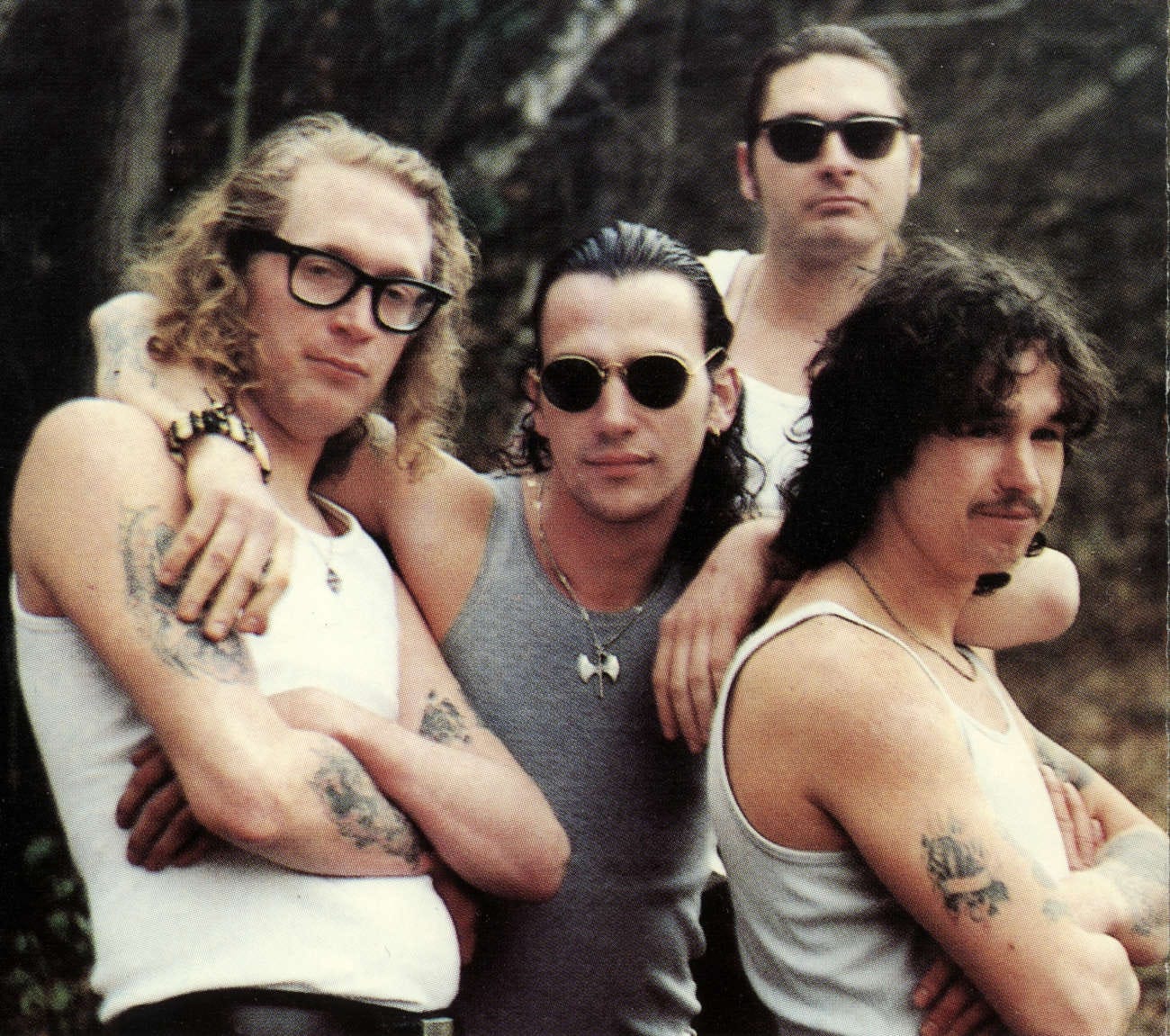
While RAC carries more torches for punk, rock, and metal than it does country, the influence of Rockwell’s Hatenanny appears in the work of the German RAC act Landser.
Landser was disbanded when the band was deemed a criminal organization by German law for the espousal of hateful rhetoric. Invoking decades-old hatred from across the world, their track titled Afrika Lied (Africa Song) pays homage to Rockwell’s Ship Those Niggers Back.
Afrika für affen (Africa for monkeys)
Europa für weiße (Europe for whites)
Steckt die affen in ein boot (Put the monkeys in a boat)
Und schickt sie auf die reise (And send them on their journey)
This reference is a significant marker between the early roots of neo-Nazism and the ideology’s eventual move into black metal.
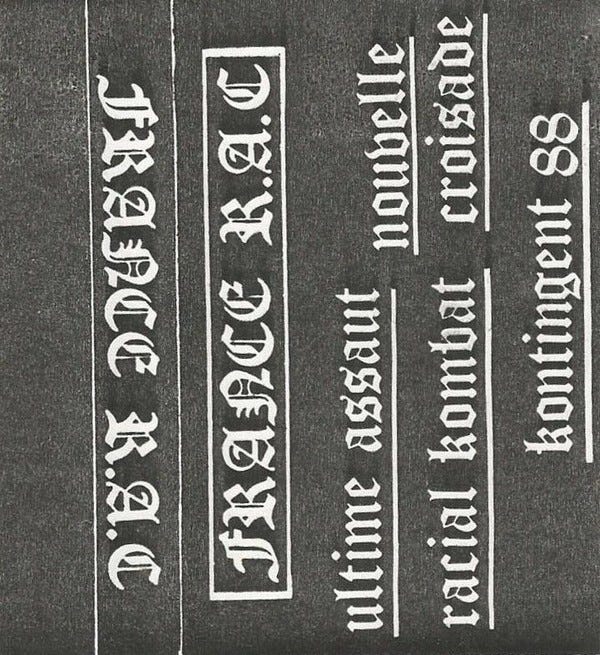
National Socialist Black Metal
A widely-known example of the unholy matrimony between RAC and black metal is Absurd. The three original members of Absurd were charged with murder at 17-years-old after they killed their peer, 15-year-old Sandro Beyer. Beyer’s murder occurred roughly a few months before Varg Vikernes’ murder of Euronymous, and after Faust of Emperor murdered Magne Andreassen. These three separate events have gone down in history as a bloody milestone in black metal.

Today, Varg Vikernes remains one of the most known figures associated with NSBM. Many know him for his continuous racist and antisemitic public statements. Vikernes’ repute as a white supremacist kicked off with the publication of his book Vargsmål (Varg’s Speech) in 1994. This book sparked a new brand of Germanic ethnonationalism known as the Heathen Front, and its associated ideology, Odalism. Similar to Lane’s Wotanism and emerging two years prior, the Heathen Front is another significant step taken back towards Völkism. Despite the assumed pivotal role he played in the Heathen Front, Vikernes has disavowed ever being behind its formation.
A more proud participant of the Heathen Front is Absurd’s own Hendrik Möbus. Möbus started the German chapter of the Heathen Front (DHF) after his release from prison in 1998. The DHF has been defunct since 2005, during which time Möbus was in prison for a variety of parole violations. Möbus has been free since 2007, and while he has continued with Absurd, he more notably runs the label Darker Than Black Records. Darker Than Black’s continuous roster of eighty-eight bands has included the likes of Goatmoon, Hate Forest, and М8Л8ТХ.
Neo-Nazi Record Labels
Darker Than Black is not the only label known for pushing NSBM content. Similar labels would be the hate-rock-centric Panzerfaust, which rather humorously came to an end upon the discovery of the founder being Hispanic, and Resistance Records.
Resistance was purchased by the National Alliance for the money and reach the label offered, but the label’s sales eventually imploded when the leader of the National Alliance, William Pierce, made remarks against the common white supremacist shortly before his death.
Möbus’ Darker Than Black and the loosely affiliated No Colour Records are lesser-known than Resistance Records due to not being affiliated with a major neo-Nazi organization. Their rosters are very apolitical, but both labels publish enough NSBM to be considered among the most significant of NS labels.
The Borderlands
Not all modern NS labels use the approach of ambiguous political affiliation. Russia’s Barbatos Records is so heavily focused on neo-Nazi content that the label is sweepingly banned from most platforms. Their own Telegram profile describes their focus as “NSBM/R.A.C./Oi!/NSHC9/PEAC10/Black Metal”, with their alias including two Sowilō runes (ϟ) — the calling card of the Nazi SS. Barbatos being so staunchly focused on pushing white supremacist music damages the plausible deniability of any band that joins the roster, even if the band is of apolitical themes. That said, two of six genres claimed by Barbatos aren’t inherently racist: Oi! and black metal. Thus it is not impossible to encounter an apolitical act in their roster.
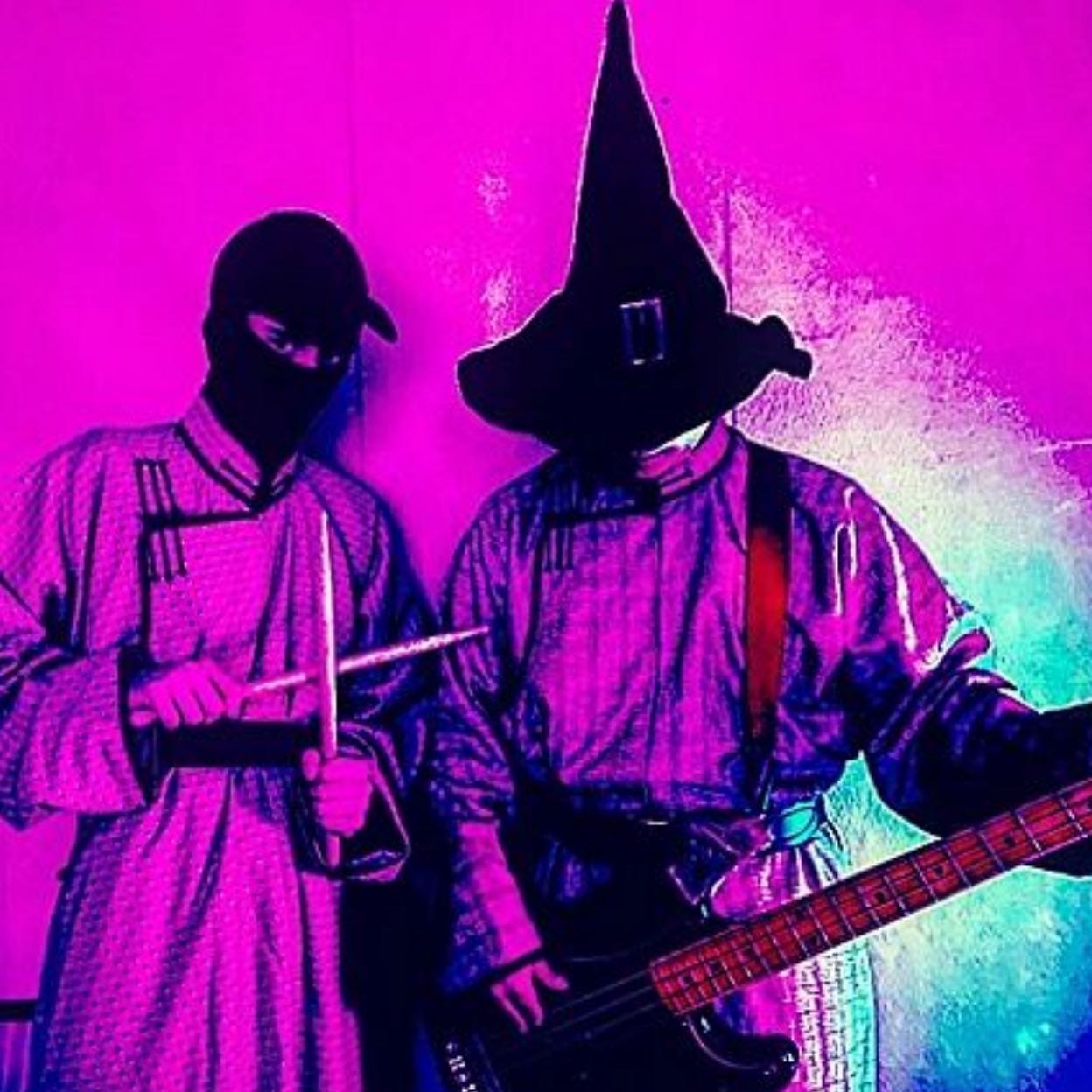
Sheep in Wolves Clothing
Behrosth of Russia is a band caught in the borderlands of neo-Nazism. Behrosth’s music is overflowing in camp and contains no overt political themes. However, the albums Behrosth released under Wunderwaffe (a subsidiary of Barbatos) were limited to eighty-eight releases, forever branding them with neo-Nazi symbolism. It may be that the members hold neo-Nazi beliefs themselves, but if so, it is not made evident through their music. Behrosth has since moved to the apolitical Goatowarex, possibly to distance themselves from Barbatos’ overt political leanings.
Magick Metal
Apart from their label affiliations, Behrosth finds kinship with other bands of neo-Nazism’s borderlands through their sound. The Russian duo sports a peculiar blend of psychedelic doom, New Wave, and black metal known as blackened psychedelic rock, or Magick Metal.
Magick Metal brings with it terrible production and abundant camp, familiar to fans of raw black metal and dungeon synth. Most Magick Metal invokes imagery from extreme politics like Nazism, communism, and everything in-between. The imagery is a reflection of the equally eclectic political views that comprise the scene. Determining the true nature of the artists behind the music is difficult, as a common trope of Magick Metal is utmost secrecy concerning the band members’ identities. This tendency towards anonymity is born of the genres namesake, Black Magick SS.
Black Magick SS, or BMSS, have been the subject of controversy since their inception in 2012. Many found their music as outrageous as their liberal use of Nazi symbolism. Due to the latter, BMSS is banned on all common streaming platforms and sale of the elusive merch is prohibited in most online marketplaces. Broaching the topic of BMSS in online metal music forums is a great way to invoke a four-way debate between if they’re Nazis, if they’re not, whether it matters at all, and why-are-we-even-talking-about-them-they-aren’t-even-metal. Most will agree that they bear none of the politics or self-seriousness that has become the standard for neo-Nazi music.
Any debate about the use of Nazi symbolism is generally centered around whether or not it can be done playfully. The naysayers claim that any use of Nazi iconography is distasteful and validates the abhorrent beliefs of neo-Nazis, even if the music itself does not espouse the ideals. Those unopposed typically regard it as Nazisploitation, the intentionally distasteful use of Nazi imagery and ideology towards the creation of shock art.
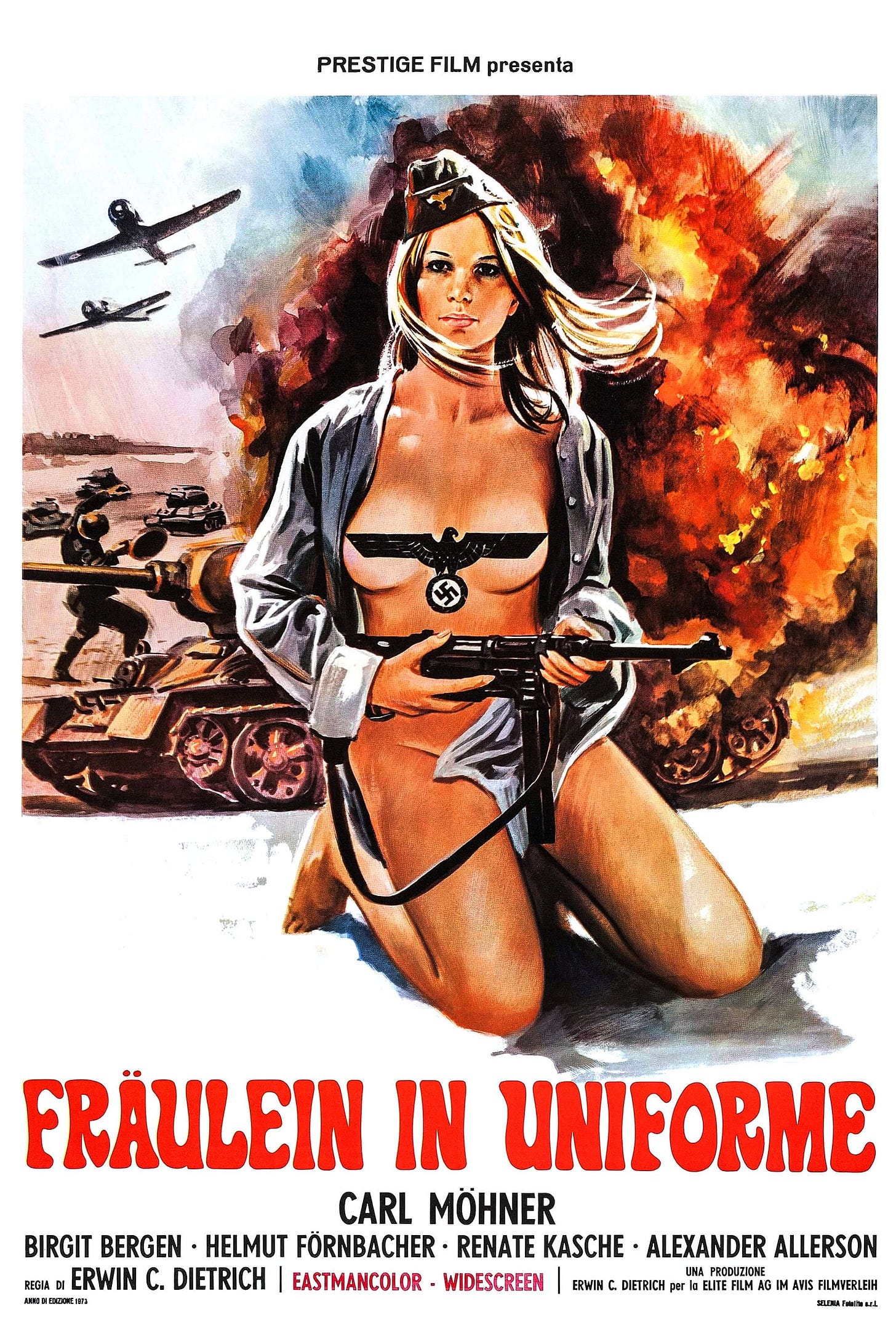
Regardless of any controversy, Magick Metal still managed to carve out a distinct identity that bridges the space between the darkest depths of the music industry to the lighthearted tones of psychedelic and New Wave. Whether this achievement is to be owed to neo-Nazis or pranksters is up for debate, but it is an impressive feat nonetheless.

An Inseparable Link
Neo-Nazism has been a festering at the fringes of Western society for over half a century, and the music industry has always provided its adherents a place for expression. As the world became a more unwelcoming place for their hate, neo-Nazis retreated into darker recesses of the music industry, eventually finding themselves in the shadowy refuge of black metal. The anonymity typical of the musicians, the air of misanthropy, and the deliberate subversion of social norms proved perfect for those seeking a harbor for their hatred.
When viewed wholly, the migration of neo-Nazis into black metal is an unsurprising outcome. The bigger question is whether ridding black metal of those we find to be of contemptuous beliefs is more important than preserving the air of “anything goes” that has afforded refuge to far more than neo-Nazis.
Upcoming Posts
An extremely apologetic recommendations post for May and June ‘24
The statistics of neo-Nazism in metal (our first Premium post)
Some more death metal recommendations from Duke
Sources, Shout-outs, and Additional Material
Band photos and additional details about bands were found on Encyclopaedia Metallum. Everything I do on this blog is made easier by that site. Go buy some merch from them.
The Southern Poverty Law Center has been extremely useful by keeping tabs on many of the mentioned organizations. The FBI has made a lot of their files on the same organizations public, which proved very handy.
The work of both Mattias Gardell and Nicholas Goodrick-Clarke has been absolutely invaluable in understanding the links between white supremacy and modern paganism. Anyone looking to learn more on the subject should begin with their books.
Please feel free to report any issues to me directly at set@blackmetalbookclub.com.
Otto Strasser would go on to form the Black Front, and later, the Deutsch-Soziale Union, two organizations that embodied nationalism and socialism the way the Strassers had envisioned for the Nazi Party.
I suppose “Twenty-Eight Words” isn’t as catchy.
Creepy — this case of child indoctrination was orchestrated by their likewise-indoctrinated mother, April Gaede.
These are only my current estimates, using data gathered from Metal Archives. For more information on how I reached these numbers, keep an eye out for the upcoming post on the statistics of neo-Nazi metal.
That’s a terrible play on “hootenanny”, if you couldn’t tell
Not to be confused with the modern US-based organization of the same name, which once belonged to the Nationalist Front.
Yes, there is even a neo-Nazi party in Japan.
National Socialist Hardcore
Power Electronics Against Communism






